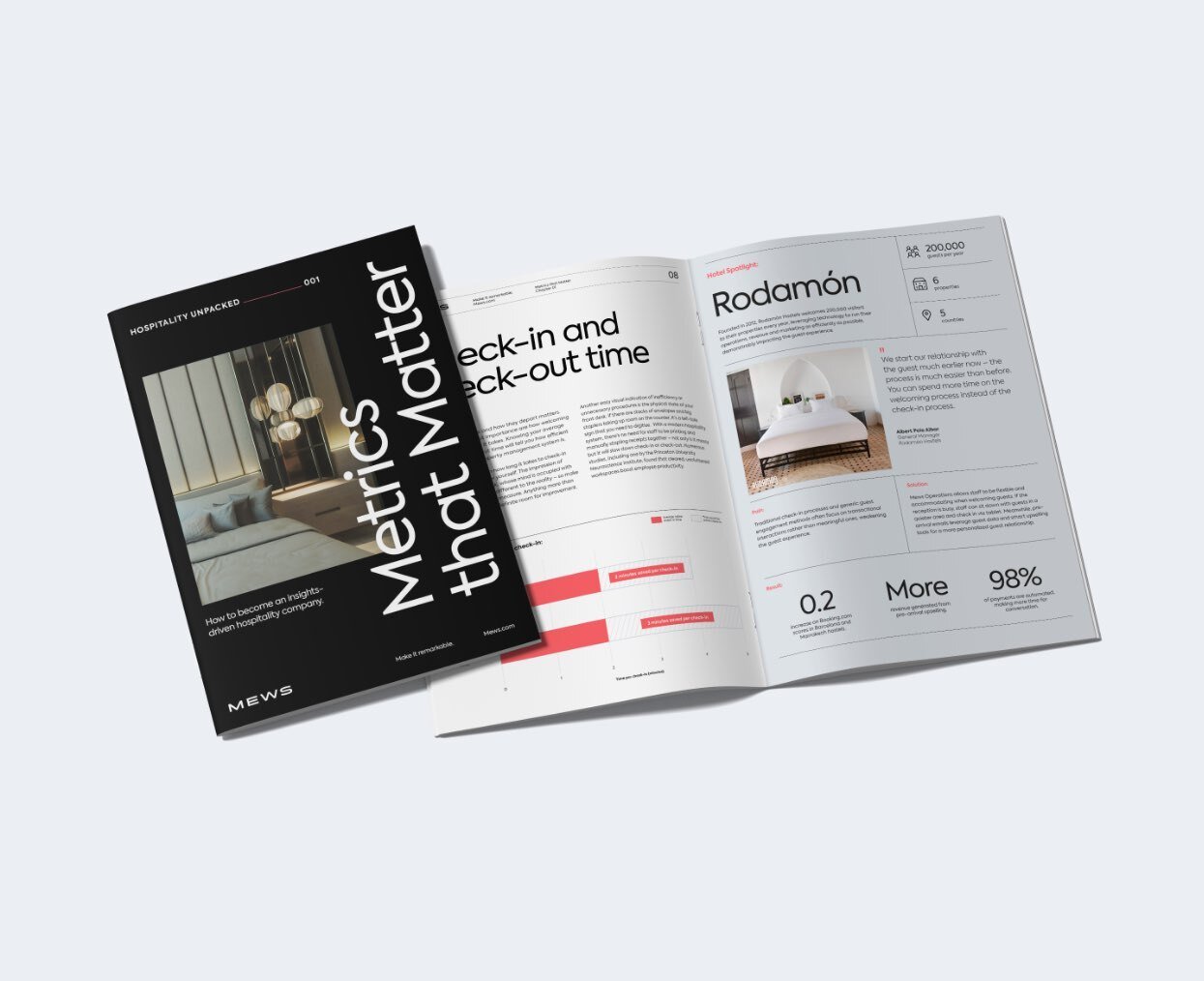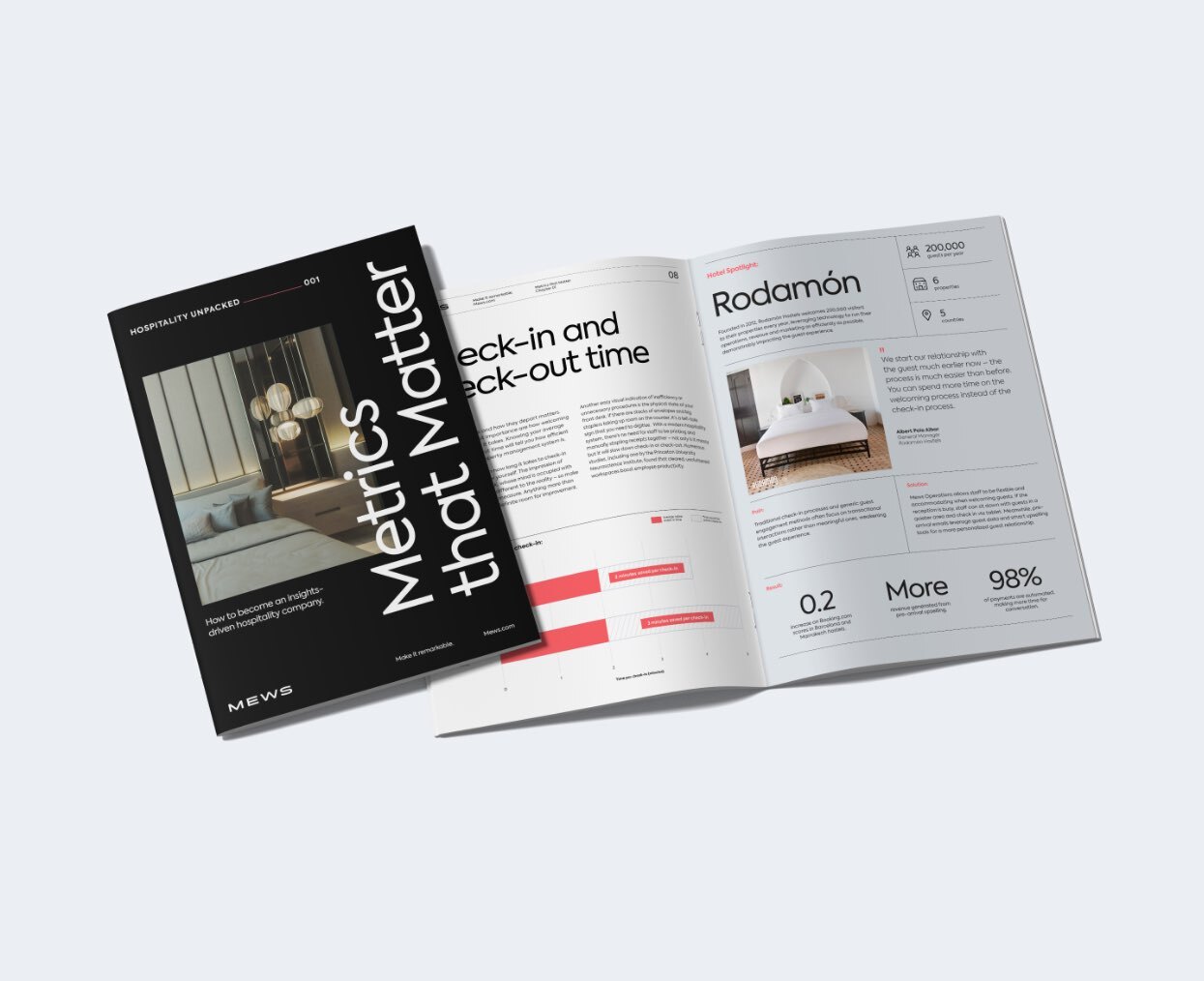Hotel occupancy rate is an essential benchmark that reflects both your hotel's performance and the demand for your rooms. Tracking this metric helps you evaluate success over time and make strategic decisions to positively impact your bottom line.
In this article, we'll dive into hotel occupancy rates - why they matter, how to calculate them, and share some tips and tricks to boost your occupancy.
Table of contents
What is hotel occupancy rate?
A hotel occupancy rate is a metric that represents the percentage of occupied rooms in your property at any given time. It's simple to calculate: just divide the number of occupied rooms by the total number of available rooms.

Why is hotel occupancy rate important?
Hotel occupancy rate is crucial for several reasons. For starters, it offers valuable insights into your hotel's performance and demand. When combined with metrics like Average Daily Rate (ADR) and Revenue per Available Room (RevPAR), it plays a key role in revenue management. By understanding demand, you can craft pricing and marketing strategies that drive growth.
Moreover, occupancy rate helps identify customer demand, enabling you to adjust operations accordingly. It also improves revenue forecasting, allowing you to plan more effectively for operational needs and predict future earnings based on expected demand.
How to calculate the occupancy rate?
To calculate the occupancy rate, divide the number of occupied rooms by the total number of rooms, then multiply by 100 to get the percentage.
Occupancy rate = (Occupied rooms / Total rooms) x 100
For example, if you have a hotel with 50 rooms and 35 are occupied, your occupancy rate would be 70%. This is generally considered a solid rate.
What is considered a good occupancy rate for a hotel?
Occupancy rates fluctuate throughout the year, heavily influenced by your hotel's location and seasonality. Typically, a good occupancy rate falls between 60-70%. Rates of 80-90% are considered excellent, often achieved during peak seasons.
How to improve your hotel occupancy rate?
Now that you're familiar with occupancy rates, let's explore effective strategies to boost your hotel's performance and set your property up for success.
Create and leverage a loyalty program
A loyalty program is more than just a fun perk - it's a powerful tool to encourage repeat bookings and increase the chances of referrals from loyal guests. Developing a well-structured loyalty program is one of the simplest and most effective ways to improve your occupancy rates.
Think of it as free marketing: you have a list of loyal guests ready to be engaged. During low occupancy periods, you can launch targeted campaigns offering special rates to your repeat customers. It's a win-win - your guests get a great deal, and you fill more rooms.
Encourage guests to leave reviews
Guest reviews are one of the most powerful promotional tools. Satisfied guests are more likely to share their positive experiences, and platforms like TripAdvisor, Google, and OTAs such as Booking.com often prompt guests to leave reviews.
Ensure you have a system in place to capture reviews-whether on your website or through social media. By showcasing these testimonials, you can build trust with potential guests and boost your occupancy rates.
Target different market segments
Every market segment has its own unique behaviors. Business travelers, for instance, tend to book during the weekdays, while leisure travelers often prefer weekends. Families, meanwhile, are guided by school holidays throughout the year. By targeting different segments, you can ensure steady demand regardless of the season or day of the week.
The more specific your market segments, the better you can tailor your marketing and promotional efforts. This not only improves your return on advertising spend but also drives higher occupancy rates.
Partner with local businesses and attractions
Collaborating with local businesses is a smart way to attract more guests. It's in everyone's best interest to encourage visitors to explore the area. Consider partnering with local tourism bureaus, event organizers, restaurants, and shops to offer special package deals or unique experiences like farm tours, cooking classes, or city tours paired with overnight stays.
Even better, create bundled offers that include accommodation and activities across multiple local businesses. The more partners you have, the more word will spread, making it easier to attract guests with irresistible deals.
Make sure your rates are competitive
Monitoring your hotel's competitive set throughout the year is a savvy way to stay informed about market rates. These insights allow you to spot trends, uncover opportunities and maintain a competitive edge.
Dynamic pricing plays a crucial role – enabling you to adjust room rates in real time based on demand, market shifts, competitor pricing and seasonality. By staying flexible, you can optimize both occupancy and profitability.
By leveraging AI and automation, you can take this a step further. Revenue management systems like Atomize, a Mews company, continuously analyze live market data and automatically update your rates across all channels. This ensures your pricing remains competitive while maintaining your ideal occupancy levels – without the need for constant manual oversight.

Tap into social media
Posting regularly on social media is a great way to support your marketing efforts organically. But don't stop there - use targeted campaigns to promote special offers and highlight your property's unique features. By showcasing what sets your hotel apart, you can increase its appeal and, in turn, boost occupancy rates.
Flexible policies
Flexibility goes a long way in attracting bookings. Policies like free cancellations and flexible check-in and check-out times can make your hotel more appealing to potential guests and help drive up occupancy rates.
Offer 10/10 customer service
Customer service is at the heart of your operation. The better the experience you provide, the more likely guests are to return - it's that simple. Delivering top-notch service not only enhances guest satisfaction but also helps to improve occupancy rates over time.
Don't shy away from data
Data analytics is a powerful tool for improving your hotel's performance. By leveraging data, you can better understand customer behavior and preferences, which helps enhance the guest experience. Tracking metrics like occupancy trends, guest demographics, and booking channels enables you to fine-tune your strategies, resulting in higher occupancy rates and more effective campaigns.
Seasonal promotions
Seasonal promotions are a smart way to maintain steady occupancy year-round. They not only help fill rooms during slower periods but also attract budget-conscious travelers with competitive pricing. Once these guests experience your property, they'll be more likely to return at full price in the future.
How Mews can improve your hotel occupancy rate
From intelligent automations, powerful revenue management to smarter distribution, Mews gives hoteliers the tools they need to drive higher occupancy – without adding operational complexity.
Automated revenue management with Atomize
The combination of AI and automation ensures that your rates remain competitive while maintaining your desired occupancy levels.
Mews seamlessly integrates with Atomize, a Mews company, an AI-powered revenue management system, to automate pricing decisions and maximize your hotel's revenue and occupancy. By analyzing historical data, forecasting and real-time data such as booking pace, market demand and competitor rates, Atomize dynamically adjusts room prices to optimize profitability. Atomize ensures that rate updates are instantly reflected across all distribution channels, eliminating manual interventions and reducing the risk of errors.
Curious about real-life results? Terrace Bay Hotel, a 117-room lakeside property in Michigan, experienced a 38% revenue increase and a 25% higher average room rate after one year of using Atomize. Initially, the team manually approved each rate suggestion, but after consistent success, they confidently switched to Autopilot mode. This allowed pricing to be optimized automatically, ensuring rooms were always sold at the best rate, boosting both revenue and operational efficiency.
With Atomize, hoteliers can make swift, data-driven pricing decisions, leading to increased occupancy rates and enhanced revenue performance. Want to learn how? Tune in to this chat between Matt Welle and Alexander Edström, founder of Atomize RMS, a Mews Company, as they discuss the ins and outs ofrevenue optimization.
Enhanced distribution through channel management
Mews integrates seamlessly with leading channel managers like SiteMinder, D-EDGE and Vertical Booking, allowing your hotel to connect with hundreds of OTAs (Online Travel Agencies), GDS (Global Distribution Systems) platforms and metasearch engines. This comprehensive set of integrations streamlines your distribution strategy, ensuring that your property is easily accessible across a wide range of global and local channels. By expanding your presence across multiple platforms, you can significantly increase your visibility, reach more potential guests and capture bookings from a diverse audience.
Integration also eliminates the need for manual updates, reducing the risk of overbookings or rate inconsistencies. With real-time updates across all channels, you can ensure that your availability, rates and promotions are automatically synchronized, making your distribution more efficient and error-free. This maximizes booking potential and ensures your hotel stays competitive.
Personalized hospitality drives repeat stays
Mews empowers hotels to build stronger, more personalized connections with guests through intelligent automated communication tools that span the entire guest journey. From pre-arrival emails and digital upsells to in-stay messaging and post-stay follow-ups, Mews enables you to tailor every interaction based on guest preferences, booking behavior and stay history.
Whether it’s offering a late check-out to a frequent business traveler or promoting a room upgrade to a returning leisure guest, Mews helps you deliver timely and relevant offers that boost engagement, satisfaction and revenue. These personal touches not only enhance the guest experience but also encourage loyalty and repeat bookings, helping you keep more rooms filled throughout the year.
Most importantly, the time saved on automating repeat tasks can be used to build more meaningful connections with the guests. Check out this talk between our Founder Richard Valtr, Dina Belon, President of Staypineapple and Lelia Jiwnani, Director and Head of Hospitality & Leisure Advisory at Deloitte.
Mobile-first, self-service guest tools
Mews offers digital check-in, check-out and guest profiles via mobile or tablet – giving travelers more control and convenience. Guests can skip the front desk and manage their stay from their own devices, which streamlines arrivals and enhances satisfaction. Mews Kiosk, Mews Payments and Digital Key also support fast secure interactions that reduce wait times and operational workload. A smooth digital-first experience translates to stronger reviews and more repeat business – directly impacting occupancy.
Integrations and Mews Open API
Mews Marketplace connects your PMS to over 1,000 hospitality apps from distribution, marketing tools and reputation management, event management to loyalty platforms. With a fully open API, Mews allows you to tailor your tech stack based on your specific occupancy goals. You can implement tools that automate guest feedback, optimize advertising or retarget abandoned bookings. This flexibility gives you a competitive edge and makes it easier to scale your operation as demand grows.
Smart housekeeping
Mews simplifies housekeeping with automated room assignments, status updates and real-time cleaning progress visible across devices. You can track maintenance issues, streamline communication between departments and reduce time-to-clean – all of which speeds up room turnaround. Faster room readiness means fewer delays at check-in and more availability during peak periods. These operational efficiencies free up staff to focus on guest experience – which in turn supports higher occupancy and better reviews.
Conclusion
We've looked at occupancy rates, their importance, how to calculate them, as well as actionable ways to improve them. These rates aren't just a vanity metric; they're a key indicator of your hotel's performance and growth potential. The more rooms you fill, the more revenue you generate - making occupancy rates a vital focus for any successful hotel operation.
Download our guide "The Metrics that Matter"





.webp)
